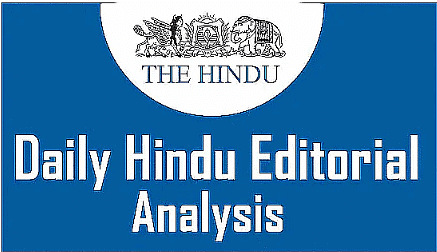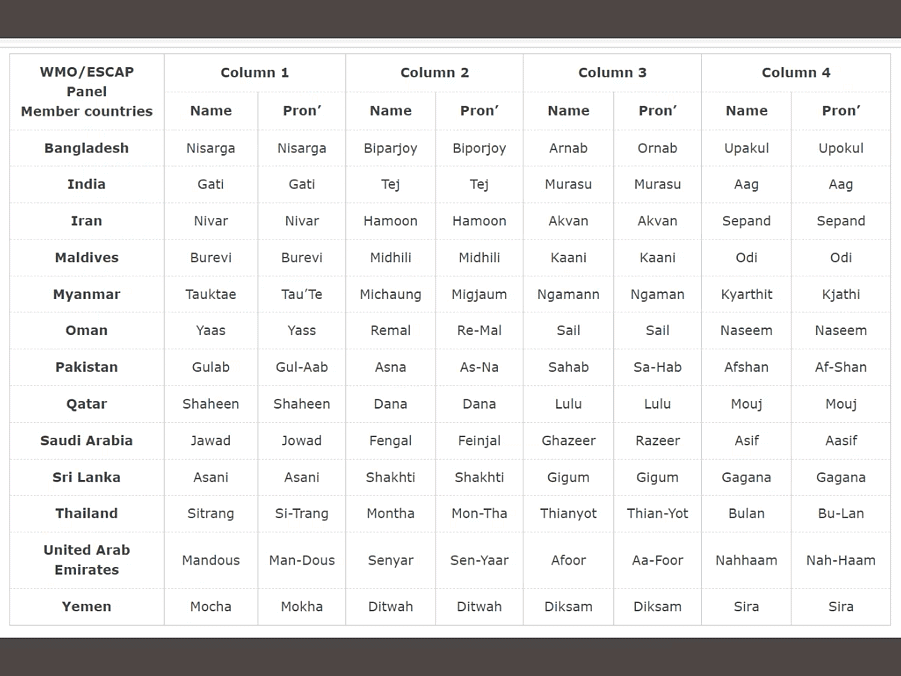UPSC Exam > UPSC Notes > Current Affairs & Hindu Analysis: Daily, Weekly & Monthly > The Hindu Editorial Analysis- 1st January 2024
The Hindu Editorial Analysis- 1st January 2024 | Current Affairs & Hindu Analysis: Daily, Weekly & Monthly - UPSC PDF Download

Floods and a ‘preventive measure’ that needs review
Why in News?
It has been many days since Cyclone Michuang passed, but every resident of Chennai still experiences the consequences of a slew of decisions taken for them, or on behalf of them, by an army of people. All these choices had consequences. And so these decisions should be accounted for. Some consequences were visible and obvious, while others were hidden and subtle.
About Cyclone Michaung
- Cyclone over South-West Bay of Bengal.
- Michaung is named after a suggestion given by Myanmar. It means strength and resilience.
- Upon formation, cyclone Michuang will become the fourth Bay of Bengal cyclonic storm and the sixth cyclone formed in the Indian Ocean in 2023.

Naming of cyclone
- The World Meteorological Organization (WMO) oversees the management of rotating name lists tailored for each tropical cyclone basin.
- Cyclones arising in various ocean basins globally receive their names from regional specialized meteorological centers (RSMCs) and Tropical Cyclone Warning Centers (TCWCs) within those areas.
- There are a total of six RSMCs across the world.
- Member nations of the RSMCs propose the names for tropical cyclones. For instance, the Indian RSMC, comprising 13 nations, puts forward 13 names each for cyclones formed in the region.
- In the earlier practice, before the official adoption of naming conventions, tropical cyclones were named based on locations, objects, or the feast days of saints on which they occurred.
- The names will be used sequentially column wise. The first name will start from the first row of column one and continue sequentially to the last row in the column thirteen.
- The names of tropical cyclones over the north Indian Ocean will not be repeated, once used it will cease to be used again.
- The name of a tropical cyclone from south China Sea which crosses Thailand and emerge into the Bay of Bengal as a Tropical cyclone will not be changed.
Guidelines to adopt names of cyclones
- The proposed name should be neutral to (a) politics and political figures (b) religious believes, (c) cultures and (d) gender.

- Name should be chosen in such a way that it does not hurt the sentiments of any group of population over the globe
- It should not be very rude and cruel in nature
- It should be short, easy to pronounce and should not be offensive to any member
- The maximum length of the name will be eight letters.
- The proposed name should be provided with its pronunciation and voice over.
- The names of tropical cyclones over the north Indian Ocean will not be repeated. Once used, it will cease to be used again. Thus, the name should be new.
Endgame
Why in News?
The Union Ministry of Home Affairs (MHA), the Assam government and the pro-talks faction of the United Liberation Front of Asom (ULFA) signed a memorandum of settlement.
- This “tripartite settlement is significant for Assam’s peace” and the government is said to have achieved success in eliminating all the violent groups in the State.
ULFA and Assam’s Struggle
- Formation of ULFA: The United Liberation Front of Asom (ULFA) was established in 1979 by radical thinkers amidst growing concerns over the identity and resources of the indigenous Assamese population.
- Cultural and Economic Shifts: The influx of migrants due to the booming tea, coal, and oil economy, compounded by the Partition and refugee influx, heightened insecurities among the native Assamese.
- Assam Accord of 1985: Aimed at resolving the issue of foreigners in Assam, the Accord was a response to a prolonged mass movement but failed to address all concerns, leading to the formation of ULFA.
Four Decades of Violence and State Response
- ULFA’s Armed Struggle: The group sought a sovereign Assamese nation through armed conflict, resulting in kidnappings, extortion, and loss of life.
- Operation Bajrang and AFSPA: In response, the Indian government launched Operation Bajrang in 1990, imposing President’s rule and the Armed Forces Special Powers Act (AFSPA) in Assam.
- Internal Divisions and State Allegations: ULFA faced internal divisions, with one faction (SULFA) surrendering and allegedly conducting state-backed ‘secret killings’ of other ULFA members.
ULFA’s External Support and Links
- Camps in Neighboring Countries: ULFA maintained camps in Myanmar, Bangladesh, and Bhutan, using them for training, shelter, and launching cross-border operations.
- Connections with Global Terror Groups: The outfit established links with Islamic terror groups and Pakistan’s ISI, with its military chief reportedly meeting Osama Bin Laden.
Efforts Towards Peace
- Initial Peace Talks: In 2005, ULFA formed a ‘People’s Consultative Group’ for peace talks, but discussions broke down, leading to renewed violence.
- Renewed Peace Initiatives: Post-2008, some ULFA commanders, including Arabinda Rajkhowa, sought peace talks, leading to a major split in the organization.
- Pro-Talks Faction’s Demands: The pro-talks faction submitted a 12-point charter of demands in 2012, leading to recent discussions and the historic tripartite peace agreement.
Tripartite Peace Agreement
- Significance of the Deal: The agreement between the pro-talks ULFA faction, the Government of India, and the Assam state government marks a significant step towards peace.
- Expert Opinions: Journalists and experts like Rajeev Bhattacharya view the deal as a positive development but acknowledge uncertainties regarding its completeness and effectiveness.
- Government’s Optimism: Union Home Minister expressed confidence in the agreement as a new era of peace, while Assam CM showed interest in engaging with the anti-talks faction.
Conclusion
- Hope for Lasting Peace: The peace deal with the pro-talks ULFA faction opens a new chapter in Assam’s history, potentially paving the way for lasting peace and development.
- Challenges Ahead: The success of the agreement and the engagement with the remaining factions of ULFA, particularly those demanding sovereignty, will determine the future stability and prosperity of Assam.
The document The Hindu Editorial Analysis- 1st January 2024 | Current Affairs & Hindu Analysis: Daily, Weekly & Monthly - UPSC is a part of the UPSC Course Current Affairs & Hindu Analysis: Daily, Weekly & Monthly.
All you need of UPSC at this link: UPSC
|
38 videos|5293 docs|1118 tests
|
FAQs on The Hindu Editorial Analysis- 1st January 2024 - Current Affairs & Hindu Analysis: Daily, Weekly & Monthly - UPSC
| 1. What is the current situation regarding floods? |  |
Ans. The article discusses the issue of floods and highlights the need for reviewing a preventive measure. It does not provide specific details about the current situation of floods.
| 2. What is the preventive measure being reviewed? |  |
Ans. The article mentions a preventive measure related to floods that needs to be reviewed. However, it does not provide specific information about the nature of this measure.
| 3. Why is it important to review the preventive measure? |  |
Ans. The article emphasizes the importance of reviewing the preventive measure related to floods. However, it does not provide specific reasons or details regarding why this review is important.
| 4. What are the potential consequences of ineffective flood prevention measures? |  |
Ans. The article does not explicitly discuss the potential consequences of ineffective flood prevention measures. It primarily focuses on the need to review a specific preventive measure.
| 5. Are there any alternative solutions proposed for preventing floods? |  |
Ans. The article does not mention any alternative solutions proposed for preventing floods. It primarily highlights the need for reviewing a specific preventive measure.
Related Searches
















